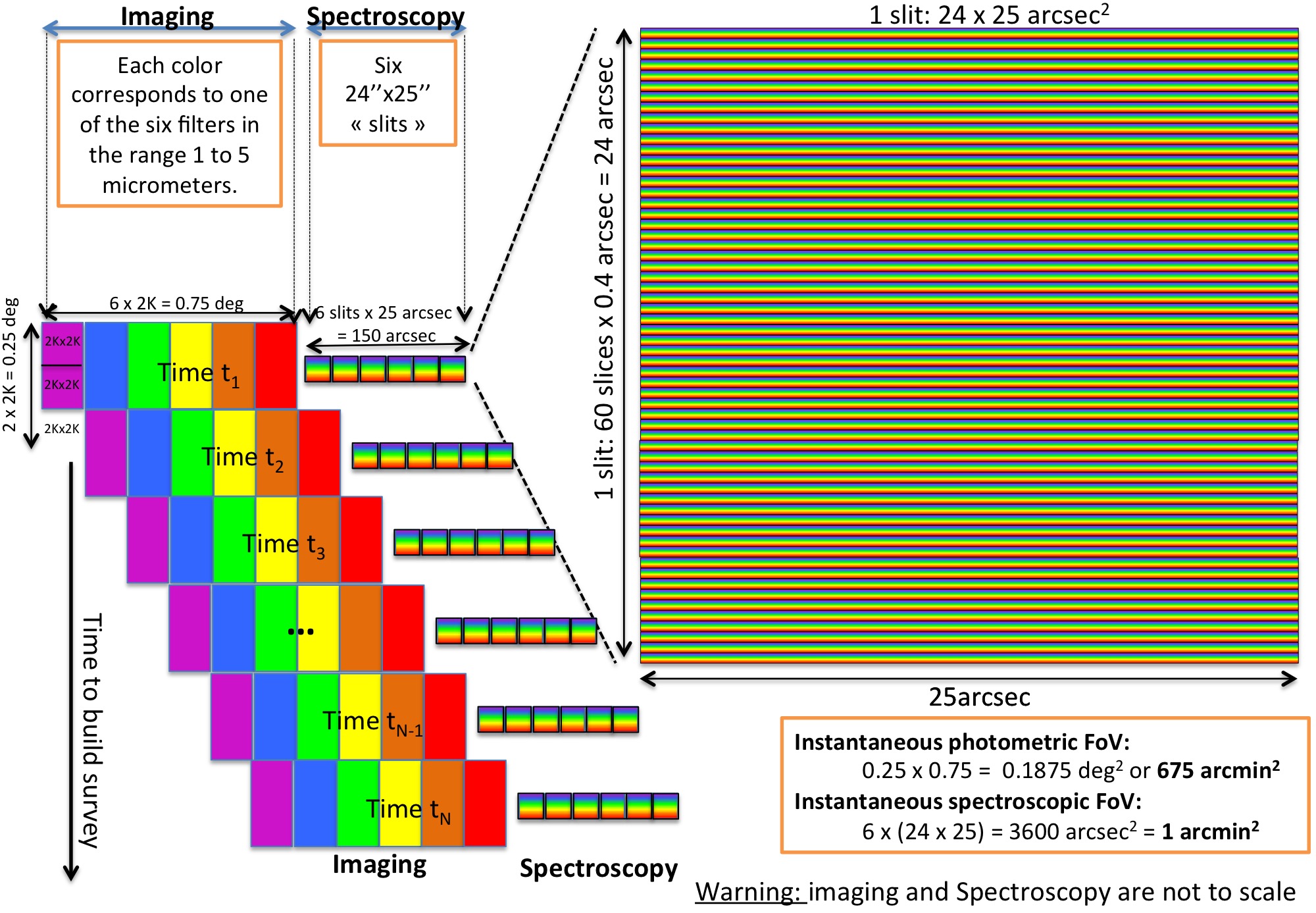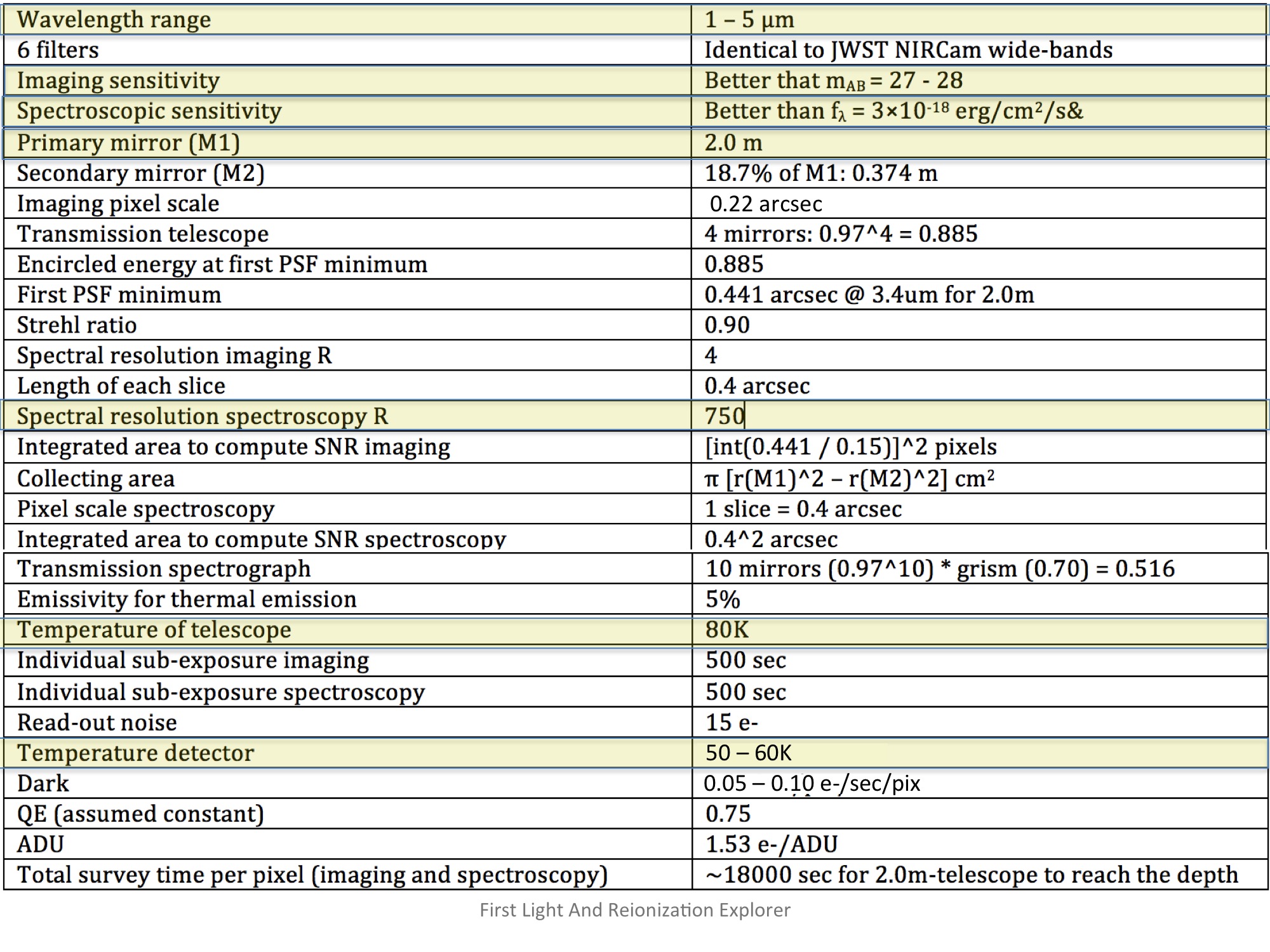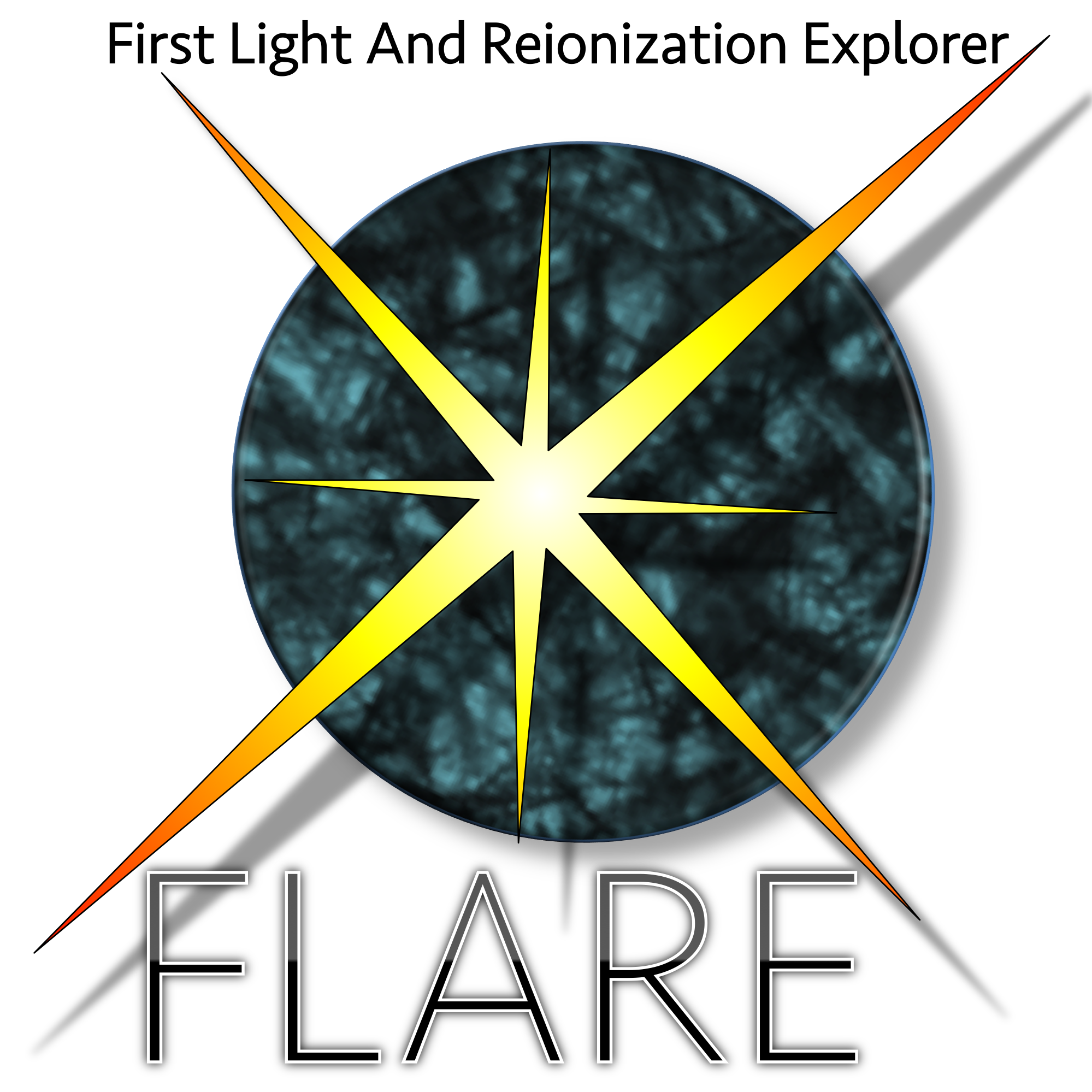FLARE surveys
- MAIN PAGE
- WISH/FLARE 2014 Meeting
- FLARE 2016 Meeting
- SUPPORTING FORM
- SENSITIVITY
- SURVEYS (this one)
- SUPPORT to FLARE/WISH
FLARE (Fig. 1) is a telescope dedicated to wide-field observations, both photometrically and spectroscopically. More specifically (Fig. 2), the instantaneous field fo view will be 0.25 x 0.75 = 0.1875 sq. deg or 675 sq. arcmin, and, the instantaneous spectroscopic field of view is 6 x (24 x 25) sq. arcsec, ie., 1 sq. arcmin. More details are given in Tab. 1. But, note that these preliminary specifications will be reviewved by FLARE's Science Working Group over the next months. We assume, here, that will will use 6 broad-band filters close to JWST-NIRCam ones (F115W, F150W, F200W, F277W, F356W, F444W).
Fig 1. - What is FLARE? Download video 720p, 11.6Mb Download video 1080p, 11.6Mb
Nevertheless, they show that FLARE occupies a niche that makes it different from, on the one hand, from Euclid and the E-ELT by covering a wavelength range dedicated to the early universe. But, on the other hand, the field of view and the size of the photometric survey (100 - 200 sq. deg) and spectroscopic survey (1 - 2 sq. deg.) at the end of the mission will allow to build much larger samples, and address unique topics related to the rarest objects in the universe, e.g., first galaxies, first quasars.


Last update: 18 March 2016 by Denis Burgarella

